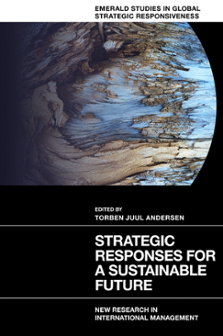
Index
Strategic Responses for a Sustainable Future: New Research in International Management
ISBN: 978-1-80071-930-9, eISBN: 978-1-80071-929-3
Publication date: 6 September 2021
Citation
(2021), "Index", Andersen, T.J. (Ed.) Strategic Responses for a Sustainable Future: New Research in International Management (Emerald Studies in Global Strategic Responsiveness), Emerald Publishing Limited, Leeds, pp. 215-222. https://doi.org/10.1108/978-1-80071-929-320214010
Publisher
:Emerald Publishing Limited
Copyright © 2021 Torben Juul Andersen
INDEX
- Prelims
- Chapter 1: Social Capital, Corporate Ethics and Social Progress
- Chapter 2: The Role of Green Strategy Adoption in Driving Green Supply Chain Management Practices
- Chapter 3: Dynamic Adaptive Strategy-making Processes for Enhanced Strategic Responsiveness
- Chapter 4: Open Strategy: A Systematic Literature Review and Research Agenda
- Chapter 5: How Resource-deprived Mavericks Circumvent Central Control: Walking or Stumbling on Two Feet?
- Chapter 6: Fear Not Your Mavericks! Their Bounded Non-conformity and Positive Deviance Helps Organizations Drive Change and Innovation
- Chapter 7: The Distribution of Performance Data: Consistent Evidence of (Extreme) Negative Outcomes
- Chapter 8: The Effects of Strategic Response Capabilities and Innovation on Performance and Risk
- Index